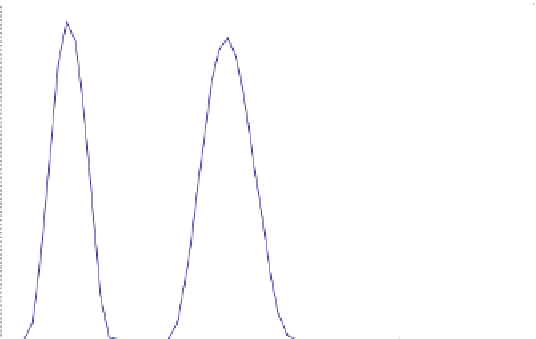Biomedical Engineering Reference
In-Depth Information
Intensity PSD
9
8
7
6
5
4
3
2
1
0
0.1
1
10
100
1000
1e+04
Size (d.nm)
figure 6.12
an example of an intensity-based particle size distribution obtained using
dynamic light scattering.
6.4
surface aNalysis techNiques
one of the most commonly used surface analysis tools is scanning probe microscopy
(SPM). SPM is a tool set that allows for the characterization of surface topology as
well as physical properties such as surface roughness, sample hardness, electrostatic
forces, and magnetic forces. atomic force microscopy (afM) refers to SPM tech-
niques in which the force of interaction between a very sharp tip/probe and the
sample provides information about the physical structure and/or properties of a
sample. To obtain information about a sample, an afM system monitors laser light
that is reflected off a cantilever that has a sharp probe at the end and onto a photode-
tector. as the probe on the cantilever interacts with the sample, the cantilever may
bend and/or twist, causing the position of the laser light on the photodetector to
change. This deflection in the laser light is interpreted by the system to provide
information on topography and various interactive forces. When measuring topog-
raphy, afM systems are usually capable of angstrom-level vertical resolution; how-
ever, horizontal resolution is limited by the shape of the probe employed. Most
general-purpose afM probes have a tip diameter of about 10 nm; however, recent
advances have made new probes with ultrathin tips (such as those with a carbon
nanotube tip) much more common. an example of an afM system is shown in
figure 6.13.
one of the strengths of afM is that it requires very little sample preparation.
Samples may be wet or dry and need only be relatively flat and secured to a substrate.
Mica sheets are typically used as a substrate for particle sample preparation as mica
has a very smooth surface. Two commonly used methods of preparing suspended























Search WWH ::

Custom Search